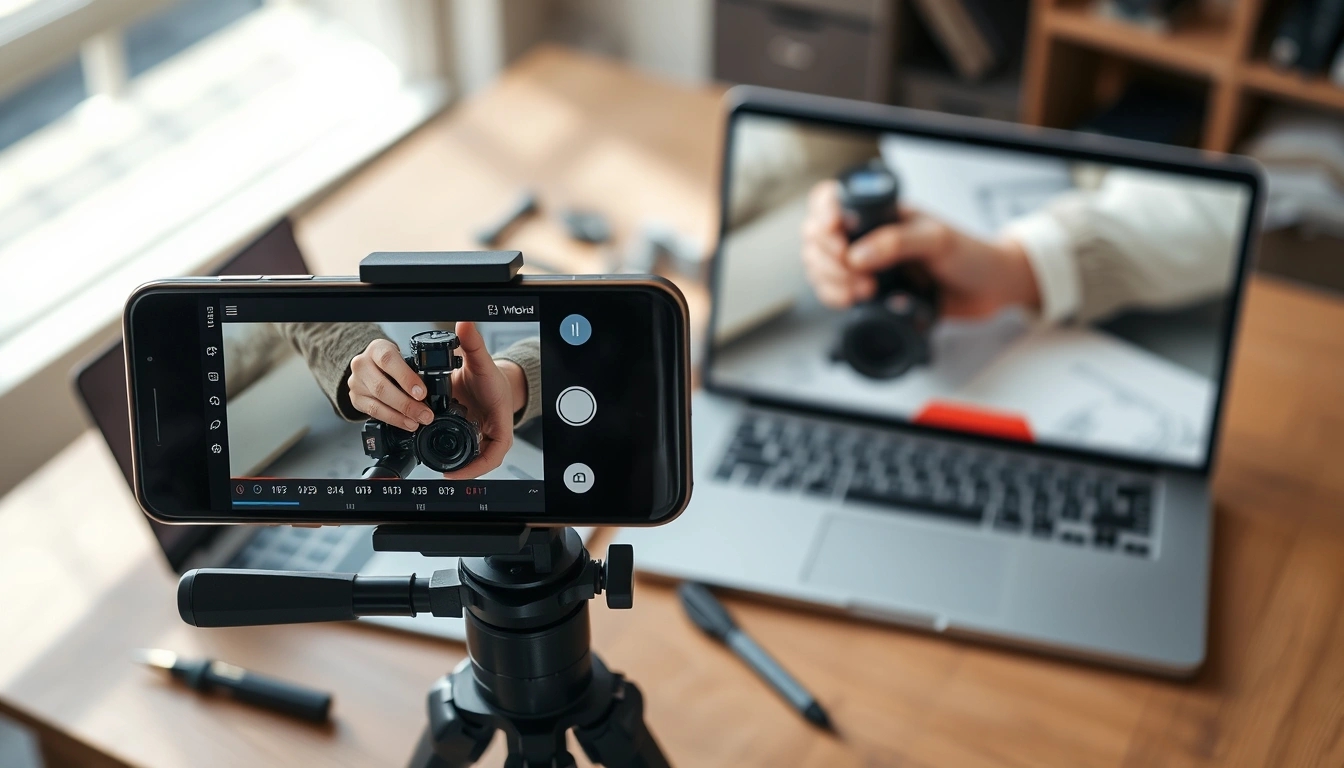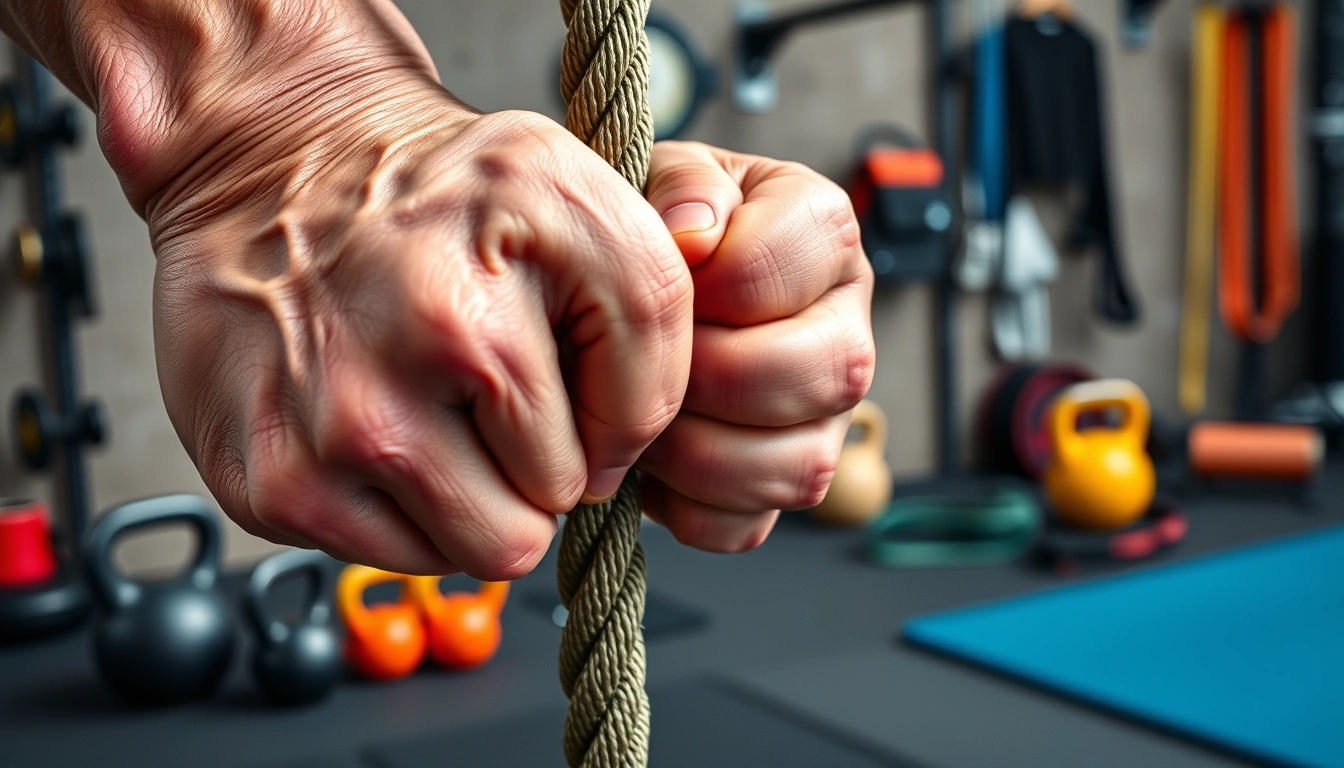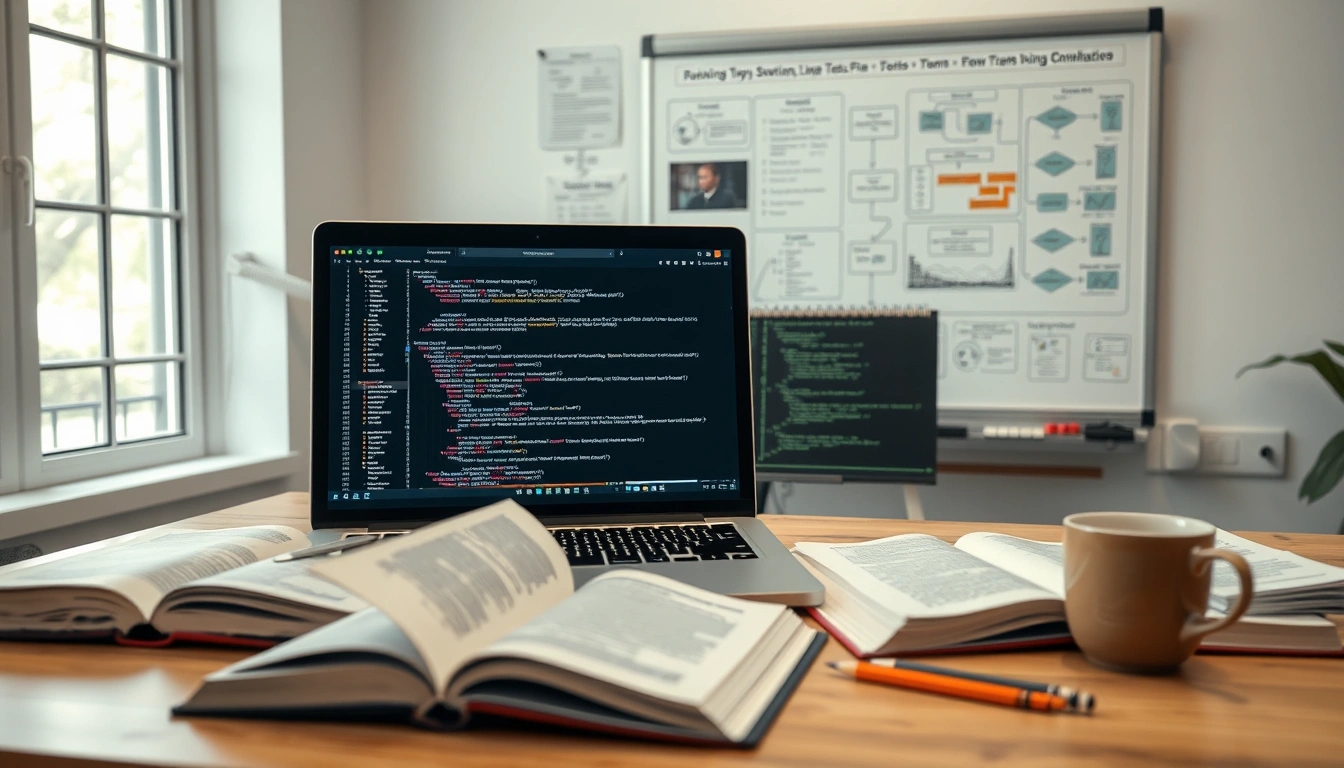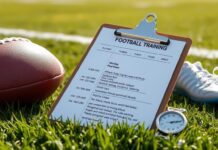So, you’re flying solo on your athletic journey, huh? No coach breathing down your neck, no instant feedback, just you and your determination. Sounds freeing, but also kinda scary, right? Well, buckle up because leveling up your technical skills without a coach is totally doable — if you get a bit creative and maybe a little stubborn.
First things first: understand the basics. It’s tempting to jump straight into flashy moves or complex techniques, but without a solid foundation, you’re basically building a sandcastle on a windy beach. Know your sport’s fundamental movements inside out. Think of it like learning to walk before you try to sprint or dance. Without that, you’ll just be flailing around.
| Basic Technical Elements | Why They Matter |
|---|---|
| Posture & Balance | Foundation for all movements; prevents injury |
| Footwork | Controls positioning and agility |
| Hand-eye Coordination | Critical for precision and timing |
| Breathing Control | Maintains stamina and focus |
Now, here’s where it gets tricky: self-assessment. No coach means no one to tell you “Hey, you’re messing up!” or “Nice job!” So, you gotta become your own brutally honest critic. Grab your phone, record yourself, and watch the playback like a hawk. Trust me, you’ll cringe, but that’s good. It means you’re learning.
- Record drills or gameplay from multiple angles.
- Compare your technique to pros or tutorials.
- Note down recurring mistakes or awkward moves.
- Celebrate small wins — they keep the mojo alive.
Speaking of videos, video analysis is your new secret weapon. Smartphones and apps these days are like having a coach in your pocket. Slow-motion replays, frame-by-frame breakdowns, even AI-driven feedback if you’re lucky. Use these tools to catch things your eyes miss in real-time.
But hey, don’t just rely on tech. There’s a treasure trove of online resources out there — YouTube tutorials, forums, online courses. But be warned: not everything online is gold. Some “experts” might just be talking nonsense or showing outdated techniques. So, be picky.
Tips for Navigating Online Resources:- Check credentials of the instructor.- Look for recent content (last 1-2 years).- Read comments and reviews.- Cross-reference multiple sources.
And remember, technique isn’t just about skill; your physical conditioning plays a huge role. Strength, flexibility, endurance — all these feed into how well you execute moves. So, don’t skip those boring strength and mobility drills. They’re the unsung heroes.
Getting feedback without a coach is a pain, no sugarcoating it. But friends, teammates, or even tech gadgets can fill the gap. Ask a buddy to watch you, or use apps that analyze form. Honest, constructive criticism keeps you grounded and focused.
Finally, motivation can tank when progress feels like watching paint dry. Set realistic goals, track your progress religiously, and remind yourself why you started. Celebrate the tiny victories — they add up.
| Goal Setting Tips | Tracking Methods |
|---|---|
| Set SMART goals (Specific, Measurable, Achievable, Relevant, Time-bound) | Use journals, apps, or spreadsheets to log practice sessions |
| Break big goals into mini-milestones | Review progress weekly or monthly |
| Reward yourself for hitting targets | Visual progress charts or video comparisons |
So yeah, no coach? No problem. It’s all about being resourceful, honest with yourself, and persistent. Your technical skills won’t skyrocket overnight, but with patience and grit, you’ll get there — and probably surprise yourself along the way.
Understanding the Basics of Technical Skills
Let’s get real for a second—before you start dreaming about nailing that perfect serve, or slicing through defenders like a hot knife through butter, you’ve gotta have your technical foundation locked down. Think of it like building a house: you wouldn’t slap together walls without a solid base, right? Same deal here. Without mastering the basics, all those flashy moves and fancy footwork are just castles built on sand—impressive for a moment but doomed to collapse the second pressure hits.
So what exactly are these “basics” everyone keeps yapping about? Glad you asked. At its core, technical skill is about precision, consistency, and efficiency. It’s the nuts and bolts of your sport—the grip on a racket, the angle of your foot when you pivot, the way you breathe during a sprint. These might sound mundane, but trust me, they’re the secret sauce that transforms a weekend warrior into a serious contender.
- Body Positioning: This is your bread and butter. Whether you’re shooting hoops or swinging a golf club, how you position your body affects everything. Too far forward, too stiff, or just plain off-balance? Say hello to missed shots and awkward moves.
- Movement Mechanics: The way your limbs coordinate, the timing of your steps, your weight distribution—all these little gears in the machine need to mesh perfectly.
- Equipment Handling: Sounds basic, but how many times have you seen someone struggle just holding their gear correctly? Mastering this early saves tons of frustration.
| Common Basic Technical Elements | Why They Matter |
|---|---|
| Grip and Hand Placement | Controls precision and power delivery. |
| Footwork and Balance | Provides stability and agility. |
| Body Alignment | Enhances efficiency and reduces injury risk. |
| Timing and Rhythm | Ensures smooth execution of complex moves. |
Now, I’m not saying you need to obsess over every micro-detail like some robot running diagnostics. But here’s the kicker: neglecting the basics is the fastest way to stall your progress. You’ll find yourself stuck in a rut, wondering why you can’t level up no matter how many hours you put in. Spoiler alert: it’s often because the foundation’s shaky.
Here’s a little practical nugget: start slow. Break down your technique into bite-sized chunks. Nail one element at a time instead of trying to swallow the whole pie in one go. For example, if you’re working on your tennis serve, don’t rush to blast the ball across the court. Focus first on your toss, then your stance, then your swing path. Piece by piece, it all comes together.
Pro Tip:- Record yourself doing the basic moves.- Compare your form to pros or tutorials.- Identify one or two things to tweak.- Practice those tweaks deliberately.
Lastly, don’t underestimate the power of patience and repetition. Technical skills aren’t learned overnight—they’re earned through sweat, frustration, and a fair share of “what the heck just happened?” moments. So embrace the grind, celebrate small wins, and keep your eyes on that solid foundation. Because once your basics are bulletproof, the sky’s the limit.
Self-Assessment: The Mirror You Often Avoid
Let’s be honest — looking in the mirror and really checking yourself out when it comes to your athletic performance? Not exactly a walk in the park. It’s like that awkward moment when you realize your dance moves aren’t as smooth as you thought, or that your shot technique has more holes than Swiss cheese. But here’s the kicker: self-assessment is not just some fancy buzzword coaches throw around. It’s absolutely crucial if you want to get better, especially when you’re flying solo without a coach breathing down your neck.
Now, before you roll your eyes and say, “Yeah, easier said than done,” let’s break it down. Self-assessment isn’t about beating yourself up or spiraling into self-doubt. Nope, it’s about developing a skill to critically evaluate what you’re doing well and where you’re stumbling — without losing your cool. Think of it as turning that nagging voice in your head into a helpful coach, not a ruthless critic.
- Start Small: Don’t overwhelm yourself by trying to analyze everything at once. Pick one aspect of your performance — maybe your footwork or your swing — and focus there.
- Ask Specific Questions: Instead of vague “Am I doing well?” ask “Is my balance steady during the shot?” or “Am I following through correctly?”
- Jot It Down: Keep a simple journal or log after practice. Writing helps clear the fog and makes your observations concrete.
Look, it’s perfectly normal to feel a bit lost or even frustrated when you start this process. The trick is to embrace that discomfort. Why? Because that’s where growth hides. If you’re not feeling a bit uneasy, you’re probably not pushing yourself hard enough.
| Common Self-Assessment Pitfalls | How to Fix Them |
|---|---|
| Being too harsh on yourself | Balance criticism with recognition of what you did well. |
| Ignoring small errors | Pay attention to details; tiny flaws add up. |
| Getting stuck in analysis paralysis | Set time limits; focus on actionable changes. |
And hey, don’t forget: self-assessment is a skill that improves with practice. The more you do it, the easier it gets to spot your strengths and weaknesses without turning into your own worst enemy. Plus, it sets the stage for using other tools like video analysis or peer feedback more effectively.
So next time you’re tempted to avoid that honest self-check, remember: it’s not about being perfect, it’s about being better than yesterday. Embrace the awkward, the uncomfortable, and yes, even the mistakes. Because that’s where the magic of real improvement happens.
Quick Tips to Keep Your Sanity While Self-Assessing:
- Take breaks — don’t drown in your own critiques.
- Celebrate small wins to keep motivation alive.
- Use video clips to get a fresh perspective.
Self-assessment? Tough. Worth it? Absolutely. Your future self will thank you for staring that mirror down — imperfections and all.

Using Video Analysis Like a Pro
Let’s be honest: mastering technical skills without a coach can feel like wandering in the dark. But here’s a secret weapon you probably already have in your pocket—your smartphone. Yep, that little gadget is more than just a distraction; it’s your personal coach, assistant, and critic all rolled into one. Recording yourself and reviewing those clips can expose all the sneaky little flaws and hidden gems in your technique that you’d never notice while you’re in the heat of the moment.
Now, before you roll your eyes and say, “Yeah, but watching myself is awkward,” hang on. It’s awkward for everyone at first. But once you get over the cringe factor, you’ll start to see things differently. You’ll catch that tiny hitch in your swing, that slight imbalance in your stance, or the way your foot placement shifts just before a move. These details? They’re gold. And the best part? You don’t need a fancy setup—just a simple app or even your phone’s default camera.
| Step | What to Do | Why It Matters |
|---|---|---|
| 1. Record Regularly | Capture your practice sessions or game moments from different angles. | Multiple perspectives give a fuller picture of your technique. |
| 2. Slow Motion Playback | Use slow-mo features to analyze fast movements frame by frame. | Reveals subtle errors invisible at normal speed. |
| 3. Compare Clips | Line up your current performance with past videos or pro athletes’ clips. | Spot improvements or areas needing work by side-by-side comparison. |
| 4. Take Notes | Write down observations or use annotation tools within apps. | Helps track progress and keeps feedback organized. |
But don’t just watch passively—engage with your footage like a detective on a case. Pause, rewind, zoom in. Ask yourself, “What’s off here? How can I fix this?” It’s like having a coach whispering in your ear, except you don’t have to fake enthusiasm after a tough day.
Here’s a quick pro tip: use apps designed for athletes. Some let you draw lines to check angles, compare your moves side-by-side with pros, or even slow down the action without losing quality. Apps like Hudl Technique, Coach’s Eye, or even simple ones like V1 Pro can turn your phone into a high-tech training tool. And no, you don’t need to be a tech genius to figure them out. Most are pretty intuitive.
- Pro Tip #1: Set specific goals before recording. Don’t just film aimlessly.
- Pro Tip #2: Share clips with friends or online communities for feedback.
- Pro Tip #3: Keep a video diary. Over time, you’ll see your growth unfold visually.
Of course, there’s a catch—sometimes watching yourself screw up repeatedly can be demotivating. But hey, nobody said self-improvement was a walk in the park. The key is persistence and a pinch of humor. Laugh at your bloopers, celebrate small wins, and remember: every pro was once an awkward beginner staring at their own shaky videos.
In the end, video analysis isn’t just about finding flaws—it’s about discovering potential. So grab your phone, hit record, and start seeing yourself the way a coach would. You might just surprise yourself.
Drills and Practice Routines You Can Do Alone
So, you find yourself without a coach, a training buddy, or even that fancy gear everyone seems to rave about. No sweat. It’s not the end of the world—or your technical progress. In fact, flying solo can sometimes be the best way to really focus on the nitty-gritty of your technique without distractions. Here’s the deal: you don’t need a crowd or expensive tools to sharpen your skills. Just a bit of creativity, discipline, and some well-chosen drills.
First off, let’s talk about basic ball control drills if you’re into sports like soccer or basketball. These are gold because they require nothing but the ball and a bit of space. For example, try the “Wall Pass Drill”: kick or throw the ball against a wall repeatedly, focusing on controlling the rebound with precision. This drill hones your timing, touch, and reaction speed. No coach yelling at you? Perfect chance to experiment with different angles and power levels.
| Drill Name | Equipment Needed | Skill Focus | How to Practice |
|---|---|---|---|
| Wall Pass Drill | Ball, Wall | Control, Timing, Precision | Pass ball to wall and control rebound; vary speed and angle |
| Shadow Movements | None | Footwork, Agility, Coordination | Practice movements without the ball mimicking game scenarios |
| Target Shooting | Ball, Marked targets | Aim, Power, Accuracy | Shoot or throw balls aiming for specific spots repeatedly |
Not into balls? No problem. Shadow drills are a fantastic way to improve footwork and coordination without any equipment. Think of it as your personal dance rehearsal—no audience, no pressure, just you and your moves. Whether it’s tennis footwork, boxing jabs, or soccer dribbling, mimic the motions slowly at first, then crank up the speed. This builds muscle memory, which, trust me, is the unsung hero of technical mastery.
Now, let’s not forget target practice drills. They’re simple but effective. Set up some makeshift targets—cones, bottles, or even shoes—and aim your shots or passes at them. It’s like playing darts but with your sport’s equipment. The key here is repetition and focus on accuracy. Don’t just blast the ball wildly; precision beats power every time when developing skill.
- Tip 1: Keep a log of your drills. Jot down what you did, how long, and what felt off or good. This self-feedback loop is crucial when you don’t have a coach breathing down your neck.
- Tip 2: Mix it up. Doing the same drill over and over can get boring fast. Rotate between control, agility, and accuracy drills to keep your brain and body engaged.
- Tip 3: Use household items creatively. No cones? Use water bottles. No target board? Tape a paper on the wall. Improvise like a champ.
Remember, the absence of a coach doesn’t mean absence of progress. It’s about turning your solo sessions into focused, purposeful practice. The more you commit, the faster you’ll see those technical skills sharpen. So grab your gear—or heck, just your determination—and get cracking. Your future self will thank you.
Learning from Online Resources: The Double-Edged Sword
Alright, let’s get real about the whole online learning scene — YouTube tutorials, forums, and online courses. They’re everywhere, right? Like, you can’t swing a virtual stick without hitting some “expert” promising to turn you into the next technical wizard overnight. But here’s the kicker: while these resources can be absolute goldmines, they can also be massive time-sinks. So how do you figure out which is which? Buckle up, because navigating this digital jungle isn’t always a walk in the park.
First off, not all tutorials are created equal. Some videos look slick, with fancy edits and pumped-up music, but the actual content? Meh. Others might be rough around the edges but packed with solid advice. It’s like judging a book by its cover — don’t. Instead, check the creator’s credibility. Are they actually experienced in the sport or just some random dude with a camera? Look for credentials, competition history, or even just consistent, quality content over time. Don’t be shy to dig into the comments, too — sometimes the viewers call out the BS faster than you can say “subscribe.”
| Tips for Finding Quality Online Tutorials | What to Avoid |
|---|---|
|
|
Forums and online communities? Oh boy, they’re a mixed bag. Sure, you can find some gems — people sharing personal tips, troubleshooting issues, or breaking down complex moves into digestible chunks. But then there’s the noise: trolls, endless debates, and conflicting advice that can leave your head spinning. My advice? Treat forums like a buffet: sample a little from here and there, but don’t overload your plate. Focus on threads with active, knowledgeable participants and avoid echo chambers where everyone just parrots the same thing.
Now, online courses often come with a price tag, and sometimes they’re worth every penny. But sometimes? Not so much. Before you drop your hard-earned cash, look for previews, reviews, or even free trial lessons. A good course should have a clear curriculum, measurable milestones, and ideally, some way to get feedback — even if it’s automated or peer-reviewed.
Practical Steps to Maximize Online Learning:1. Start with free content to gauge quality.2. Supplement videos with written guides or books.3. Record yourself practicing the techniques.4. Compare your form to tutorial examples.5. Join online groups for support and feedback.
In the end, the key is balance and patience. Online resources can be your best friend or your worst enemy depending on how you use them. Don’t expect miracles overnight, and don’t be afraid to ditch a tutorial or course if it’s not working for you. Remember, becoming technically sound is a marathon, not a sprint — and sometimes the best lessons come from trial, error, and a little bit of stubbornness.

The Role of Physical Conditioning in Technical Improvement
Let’s get one thing straight: technique isn’t just about nailing that perfect move or fancy footwork. Nope, it’s also about how well your body is primed to pull off those moves without falling flat on its face. You can have the sharpest mind for tactics, but if your muscles are weak, stiff, or just plain exhausted, your technique will suffer — big time. So, what’s the secret sauce? It’s all about strength, flexibility, and endurance. These three pillars form the backbone of any athlete’s ability to execute skills consistently and efficiently.
First up, strength. Think of your muscles as the engine powering your technical moves. If your core, legs, or arms lack strength, your form will wobble, your balance will falter, and your precision? Forget about it. For example, a basketball player trying to perfect their jump shot without sufficient leg and core strength will struggle to maintain stability and follow-through. Strength training isn’t just for bodybuilders; it’s a necessity for anyone serious about sharpening their technique.
- Core workouts: Planks, Russian twists, and leg raises help stabilize your entire body.
- Leg strength: Squats, lunges, and calf raises improve power and balance.
- Upper body: Push-ups, pull-ups, and dumbbell rows aid in control and precision.
Next, flexibility. Ever try to swing a bat or kick a ball with tight muscles? It’s like trying to write with a cramp in your hand. Flexible muscles and joints allow a greater range of motion — meaning your technique doesn’t get boxed in or restricted. Stretching routines or yoga can be a game-changer here. Don’t just stretch when you feel stiff; make it a habit. It’s the difference between fluid, effortless movements and awkward, jerky ones.
| Flexibility Benefits | Examples |
|---|---|
| Improved range of motion | Better swing in tennis, smoother kicks in soccer |
| Reduced injury risk | Less muscle strain and joint pain |
| Enhanced muscle coordination | More precise and controlled movements |
Lastly, endurance. Let’s face it, technique can go out the window when you’re gasping for air halfway through a drill. High endurance means you can keep your form tight even when fatigue creeps in. Whether you’re sprinting, swimming, or cycling, cardiovascular fitness lets you maintain focus and technical sharpness longer than your competition.
Endurance Training Tips:- Interval runs to boost aerobic and anaerobic capacity- Cycling or swimming for low-impact cardio- Consistent moderate-intensity workouts to build stamina
So yeah, technique is a cocktail of skill and physical readiness. You can’t just “think” your way to perfect form; your body’s got to be on board. Strength, flexibility, and endurance aren’t just buzzwords — they’re the foundation that keeps your technique from crumbling when it counts. Next time you’re practicing alone, don’t just drill the moves; condition your body to support them. Your future self (and your coach, if you ever get one) will thank you.
Seeking Feedback Without a Coach: Friends, Peers, and Tech
Flying solo on your technical journey? Yeah, it’s like trying to find a needle in a haystack when it comes to getting honest feedback. Without a coach breathing down your neck or offering pointers, you’re basically your own referee, and let’s be real, referees don’t usually get to call their own fouls. But don’t throw in the towel just yet—there’s a whole world of options to tap into, from your social circle to the wonders of modern technology, that can help you get the critiques you need to level up.
First off, don’t underestimate the power of friends and peers. Sure, they might not be experts, but sometimes a fresh pair of eyes is all you need. The trick? Be specific. Instead of “How did I do?” ask them to look out for particular things, like your foot placement or follow-through. You’d be surprised how much more useful feedback you get when you guide their focus. Plus, if you can rope in someone who’s also into your sport or at least understands the basics, that’s even better.
- Tip: Organize casual practice sessions with fellow enthusiasts. Nothing fancy, just a meet-up where you can watch each other and share notes.
- Pro tip: Use social media groups or local clubs to find peers who might be interested in swapping feedback.
Now, let’s talk tech—your new best friend on this solo grind. Smartphones are basically mini coaches in your pocket, and apps? Oh boy, they can be game-changers. Recording your sessions lets you catch those sneaky mistakes that vanish the moment you think you nailed it. Slow-motion playback, frame-by-frame analysis, even overlay comparisons with pros—you name it, there’s probably an app for it.
| Technology Tool | Use Case | Why It Helps |
|---|---|---|
| Video Recording (Smartphone) | Record training sessions | Replay and spot errors missed live |
| Analysis Apps (e.g., Hudl, Coach’s Eye) | Frame-by-frame breakdown | Detailed movement insights |
| Wearables (Fitbit, Garmin) | Monitor physical stats | Link fitness to technique performance |
But here’s a curveball: tech can overwhelm you if you’re not careful. Endless data, too many angles, and trying to be a one-person film crew can get exhausting fast. So, keep it simple. Focus on one or two aspects per session and review the footage with a clear goal in mind.
And hey, if you’re feeling brave, post clips online for feedback. Platforms like Reddit’s sports subs or specialized forums can be brutal but honest. Just brace yourself for the occasional troll—remember, not all feedback is created equal.
Quick checklist for solo feedback seekers:
- Identify specific technical points to improve
- Ask friends/peers targeted questions
- Use video to self-analyze regularly
- Leverage apps for detailed breakdowns
- Engage with online communities cautiously
- Don’t overload yourself—focus on small improvements
So yeah, flying solo isn’t a walk in the park, but with a little creativity and the right tools, you can turn your social network and gadgets into a feedback machine that keeps pushing your skills forward. Just remember, nobody’s perfect, and sometimes the best critiques come from the most unexpected places—even that one friend who’s usually just there for the snacks.
Staying Motivated When Progress Feels Slow
Let’s be honest—staying pumped when your progress crawls at a snail’s pace is one of the toughest gigs in solo training. Without a coach shouting “Come on, push harder!” from the sidelines, it’s easy to feel like you’re stuck in a rut, spinning your wheels but not getting anywhere. The worst part? Sometimes, improvements are so subtle or invisible that you start doubting if all this effort is worth it. Spoiler alert: it is. But how do you keep that fire burning when motivation dips into the abyss? Let’s break it down.
- Celebrate Tiny Wins – Seriously, don’t wait for the big breakthroughs to pat yourself on the back. Did you nail a drill you struggled with last week? High five yourself! These small victories are the breadcrumbs leading to bigger success.
- Mix Up Your Routine – Doing the same drills every day can turn your brain into mush and your enthusiasm into dust. Switch things up: try new exercises, change your practice environment, or even listen to different music to keep the vibe fresh.
- Visualize Progress – When you can’t see improvements, sometimes you gotta imagine them. Picture yourself executing a perfect technique or winning that match. Sounds cheesy? Maybe. But it works.
Now, here’s a nifty little table to help you track motivation killers and their antidotes:
| Motivation Killer | What To Do |
|---|---|
| Boredom with routine | Introduce variety: new drills, different locations, or training times |
| Invisible progress | Use video analysis to spot subtle improvements; keep a journal |
| Feeling isolated | Connect with peers online or find a training buddy |
| Self-doubt and frustration | Focus on effort, not just results; practice mindfulness or short breaks |
Look, motivation isn’t some magical switch you flip once and forget about. It’s messy, unpredictable, and sometimes downright annoying. You might wake up feeling like a champion and crash by noon. That’s normal. What’s important is to build habits that support your mood swings instead of relying on a constant “coach voice” in your head.
Here’s a quick list of practical tips to keep your motivation alive when the going gets tough:
- Set micro-goals: Instead of “I want to master this technique,” try “I’ll do 10 perfect reps today.”
- Reward yourself: Finished your practice? Treat yourself to something small but enjoyable.
- Track your journey: Keep a training log or video diary. When you feel stuck, looking back can remind you how far you’ve come.
- Remember your why: Why did you start? Keep that reason front and center to reignite your passion.
At the end of the day, self-motivation is a rollercoaster ride, not a straight path. Don’t be too hard on yourself if some days feel like a slog. Even the pros have off days—except they usually have a coach to yell at them. You? You’re your own coach now. So, put on your captain’s hat, embrace the ups and downs, and keep moving forward. Your future self will thank you.

Setting Realistic Goals and Tracking Progress
Alright, let’s get real for a second—goal-setting isn’t just some annoying coach tactic to keep you on a leash. It’s actually the secret sauce that can turn your solo training sessions from random sweat-fests into focused, meaningful progress. But here’s the catch: setting goals isn’t about dreaming big and then crashing hard because you aimed too high or too vaguely. Nope, it’s about being smart, practical, and keeping tabs on how you’re doing without losing your mind or motivation.
First off, realistic goals are your best friends. Forget about “I want to be the next Michael Jordan by next month” kind of stuff. Instead, break it down. Think small wins that add up. For example, if you’re working on your tennis serve, don’t just say “I want to serve better.” Make it measurable: “I want to increase my serve speed by 5 mph in the next 4 weeks” or “I’ll practice my toss 30 minutes every day.” See the difference? Clear, achievable, and trackable.
- Specific: What exactly do you want to improve?
- Measurable: Can you track progress with numbers or clear indicators?
- Achievable: Is it within your reach given your current skills?
- Relevant: Does this goal actually help your overall game?
- Time-bound: When will you check your progress?
These five points make up the classic SMART goal framework. It sounds fancy but trust me, it’s gold.
Now, onto tracking progress. This is where many folks trip up. You set goals, start off strong, then *poof*—no idea where you stand a month later. Don’t be that person. Use simple tools like a training journal or apps on your phone. Jot down what you did each day, how you felt, and any specific stats you can measure. Even better, keep a video log of your practice sessions. Watching yourself back is like having a coach whispering advice in your ear—only less annoying.
| Tracking Method | Benefits | Tips |
|---|---|---|
| Training Journal | Easy to update, personal reflections | Be honest, note mood and energy levels too |
| Video Analysis | Visual feedback, spot technique flaws | Review weekly, compare with previous videos |
| Performance Apps | Automatic stats, reminders | Pick one that suits your sport and style |
Don’t forget to celebrate small victories. Did you nail your target serve speed this week? Awesome! Reward yourself—not with junk food, but maybe some new gear or a chill day off. Keeping morale high is half the battle.
Finally, be flexible. Sometimes you’ll hit a plateau or get injured. That’s life. Adjust your goals accordingly and don’t beat yourself up. The goal is progress, not perfection.
So, in a nutshell: set smart, bite-sized goals, track them religiously, and keep tweaking your plan. Without a coach breathing down your neck, this self-driven approach is your best bet to level up technically while keeping your sanity intact.
Remember: It’s your journey, your pace, and your wins. Own it.
Frequently Asked Questions
- How can I improve my technical skills without a coach?
Great question! The key is to become your own best mentor. Use video analysis to watch and critique your performance, practice targeted drills alone, and tap into online tutorials. Think of it like being a detective—spotting clues in your technique and solving the puzzle step by step.
- What’s the best way to self-assess my skills effectively?
Self-assessment can feel like looking in a funhouse mirror—distorting and tricky. To keep it real, record your sessions and compare them against expert examples. Keep a journal of your progress and be honest but kind with yourself. Remember, every pro was once an amateur who dared to look closely.
- Are online resources reliable for learning technical skills?
Online content is like a vast ocean—full of treasure but also some junk. Focus on reputable channels, verified coaches, and community-reviewed tutorials. Don’t just watch; practice actively and cross-check multiple sources to avoid sinking in misinformation.
- How important is physical conditioning for technical improvement?
Think of your body as the engine powering your skills. Without strength, flexibility, and endurance, even the best technique falls flat. Incorporate conditioning exercises to build a solid foundation that lets your technique shine effortlessly.
- What if I don’t have anyone to give me feedback?
No coach? No problem! Use technology—apps that analyze motion or slow-motion video can be your virtual coach. Also, reach out to friends or peers for honest opinions. Sometimes, fresh eyes spot what you miss.
- How do I stay motivated when progress feels slow?
Patience is your secret weapon here. Set small, achievable goals and celebrate each win, no matter how tiny. Visualize your future self mastering those skills—it’s like planting seeds that will bloom over time.
- What are some effective drills I can do alone to enhance my technique?
Focus on drills that isolate specific skills—like footwork patterns, balance exercises, or repetition of key movements. Consistency beats complexity; even simple drills done regularly can trigger explosive improvements.
- How do I set realistic goals and track my progress?
Use the SMART method—Specific, Measurable, Achievable, Relevant, Time-bound goals. Keep a progress log, review it weekly, and adjust your targets as you grow. Think of goal-setting as your personal GPS guiding you toward success.












